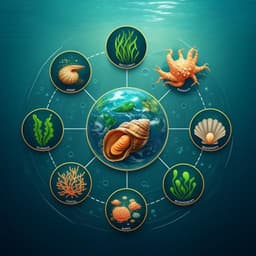
Earth Sciences
A heterocyte glycolipid-based calibration to reconstruct past continental climate change
T. Bauersachs, J. M. Russell, et al.
This groundbreaking research by Thorsten Bauersachs, James M. Russell, Thomas W. Evans, Antje Schwalb, and Lorenz Schwark uncovers the potential of heterocyte glycolipids from cyanobacteria as reliable temperature proxies, revealing a significant 4.1 °C warming in Lake Tanganyika over 37,000 years. A must-listen for anyone interested in understanding past and future continental climate change!
Playback language: English
Related Publications
Explore these studies to deepen your understanding of the subject.







